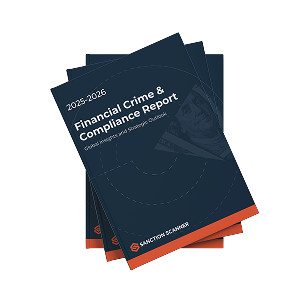Every year, banks worldwide pay fines for AML compliance. In 2021, ABN AMRO, a Dutch investment bank, paid $574 million for its customers’ criminal activities, and it was one of the top 5 fines of the year.
AML regulations contain measures companies must take to detect and prevent disguising illicit financial activities, and authorities supervise businesses to implement these regulations. Hundreds of local and global regulators are doing AML studies worldwide. Although different jurisdictions have different authorized institutions like FCA in the UK, OCC and FINCEN in the USA, and non-governmental ones like FINRA in the USA, the goals and ways are generally similar. All regulators aim to prevent money laundering thanks to policies with minor variations from country to country and region.
This article will examine a specific sector, banking, regarding anti-money laundering regulations and compliance. Banking is a significant field under AML obligations because of its high-risk potential for financial crime.
What is AML in Banking?
Anti-Money Laundering guidelines represent the rules, regulations, and AML obligations to detect and prevent money laundering and other financial crimes. It is impossible to determine the exact amount, but billions of dollars of financial crimes are committed yearly. Any financial crime that cannot be detected and prevented results in crime organizations taking the courage to increase their criminal activities. Because of that, many local and global regulators combat financial crimes effectively. These regulators publish regulations, recommendations, AML policies, and obligations for organizations working in potentially risky areas. For the banking sector, this requires having the personal information of its customers correctly at the beginning of the customer journey. That makes the onboarding procedure extremely significant. The importance and components of Know Your Customer (KYC) and Customer Due Diligence (CDD) procedures for an effective AML program will be examined later in the article.
Secondly, screening the customers and their counterparties is crucial for catching illegal activity attempts. Each person must always be scanned during transactions via the bank. Having access to lists and updating the data are points that AML Compliance Officers or teams must pay attention to. In addition, they must record all activities for reporting and finding previous information regarding list updates.
Monitoring each client's transactions is another requirement of the compliance procedure. It is necessary to detect abnormal actions and suspicious transactions. Banks must see and block during the investigation to ensure the risk of the transaction or the parties.
Finally, Banks need to be connected with authorities and report those suspicious detections. It is suggested to work with related institutions closely to get know-how and get recent developments about regulations.
Why Should Banks Be Careful About Money Laundering?
Banks have been the largest institutions in finance in the past. Considering that even a single local bank mediates thousands of financial transactions throughout the day, millions of financial transactions are realized through banks every day when we look at the world. This makes banks attractive as financial resources for criminal gangs and individuals.
According to the announced data, criminals carry out 97% of money laundering activities through financial institutions. Generally, they divide the money into small portions with different accounts in different banks to avoid suspicion. They can afford to make “dirty money” appear legal and then withdraw or send it.
Mediating millions of financial transactions daily puts banks at significant risk for financial crimes. For this reason, banks must identify the risks by fulfilling their AML obligations and taking precautions for them.
AML Compliance Program for Banks
The compliance program should work perfectly from the outset to effectively combat financial crimes and have an AML compliance policy. The first step in establishing a comprehensive compliance program is to meet all required AML obligations. Failures in the AML compliance program will result in being punished by regulators and paying both material and reputational costs. Therefore, banks must set a compelling AML compliance program to meet the regulations they are obliged to comply with.
Risk-Based Approach to Banking
The Risk-based approach is the most critical element of effective AML / CFT programs. FATF, the European Union, and most local AML regulators agree on implementing a risk-based approach to AML / CFT. According to the risk-based approach, the risk level of each customer is different. Also, countries have different risk levels. For this reason, businesses have to determine the risks to the customer and apply control processes specifically. Banks are obliged to assess KYC and CDD procedures by using a risk-based approach during the account opening process. Banks then have to control their customers' transactions with the control mechanisms developed by their risk levels.
Know Your Customer in Banking
Know Your Customer (KYC) is a step to collect customers’ personal information like name, ID, nationality, etc., during onboarding. It is critical as the first control mechanism applied in the AML program. Because an error at this stage causes the entire AML program to become dysfunctional, KYC procedures are mandatory for banks.
At this stage, banks check the accuracy of collected customer information to be sure that customer and given information match. The KYC process can be done using identity card verification, face verification, and invoice proof of address. Recently, digitalization caused many improvements regarding KYC, whereas the risk increased at the same time.
Customer Due Diligence in Banking
Customer Due Diligence (CDD) is the control process banks implement to identify potential money laundering and terrorist financing risks carried by customers. Although these procedures are not the same worldwide, the goal is to identify risks. The customers’ information is checked in the required databases according to the location of the institutions. These databases generally consist of sanctions, PEP, banned, and wanted lists. The people on these lists carry high risks for money laundering and terrorist financing. Also, in banks that provide global services, the customers' nationality and past financial transactions affect the customers' risk level.
AML Name Screening Software
Sanction Scanner AML Screening solution automates banks' CDD control processes. Banks can automatically scan their customers in global comprehensive sanctions, PEP, and Adverse Media data during customer onboarding and monitoring processes.
Transaction Screening
Banks generally have a broad customer portfolio. Besides, the transactions mediated by banks are not limited to their customers. Customers of a bank can make payments and transfer money to another bank's customer—an average-sized bank channels thousands of money transfers throughout the day. Banks are obliged to control the buyer and the sender in these money transfer transactions.
It faces crucial penalties if a bank mediates the payment sent to a banned or sanctioned person. The consequences of the crimes caused by the receiver and the sender's uncontrolled reception have severe administrative and financial fines. Also, banks lose their reputation in the eyes of customers and the market. In today's technology, manual controls are a waste of time and dysfunctional, especially for digital banking services. Therefore, banks need an automated transaction screening tool to carry out customer transactions according to AML regulations.
Transaction Screening Software for Banks
The Sanction Scanner Transaction Screening tool lets banks control the receiver and sender in financial transactions in the global coverage AML database. Banks can automate the entire control process by integrating their systems and transaction screening tools with the API. All AML screening takes place automatically against the background of the transactions performed via the bank. If the system catches a match, it alarms and stops the transaction. The scanning process takes place within seconds, and the customer process is not delayed if it is not suspicious.
Transaction Monitoring
Only people in the sanction, PEP, and Adverse Media databases do not commit financial crimes. Each customer carries a financial crime risk for banks; therefore, focusing only on the lists might cause missing other abnormalities. There are many money laundering methods, and with technological development, these crime types have been rising even more. While it is impossible for banks that mediate thousands of transactions to control them manually, with today's opportunities, transaction monitoring tools do this automatically and in real-time.
Banks can create various rules with AML Transaction Monitoring software, and every transaction they mediate is controlled automatically based on these rules.
Transaction Monitoring Software for Banks
Banks can create dynamic rules and scenarios with our advanced features and test them before going live with the sandbox test environment. The AML Compliance Officer can instantly see all transactions' alarm levels and assign tasks related to these transactions to teammates with real-time alarm management. All logs are recorded, and the bank can display these logs as evidence in possible audits. Banks make control processes more efficient with customizable settings and reduce AML false positives.
Independent AML Audits
Independent AML audits enable banks to control the AML compliance program end-to-end. Even though banks have their AML departments, it is vital to handle them with independent audits. It is necessary to eliminate potential missing points of their compliance implementations.
Deficiencies detected by independent audits may protect banks from millions of dollars in fines and prevent reputation losses. In addition, according to the independent audit reports, banks compensate for AML compliance programs' deficiencies and further develop the AML program. That’s why banks should have the AML program checked by an independent audit at one or two-year intervals.
Final Thoughts
Banking is one of the sectors that are most audited because of being a channel for direct financial activity and possible amounts of money. They must have a comprehensive AML compliance program, a talented and reliable AML officer, or a team. As mentioned above, there are some processes to imply and ensure continuity. Risk assessment, KYC and CDD are the first duties; after them, the constancy of compliance requires attention.
Fortunately, technology offers several options and faster ways to apply the mentioned tasks. Every company in the banking sector should select solutions that have the right components for their businesses. As Sanction Scanner, we are always willing to support their effort in combatting financial crime with our products strengthened by machine learning, AI, and APIs.






